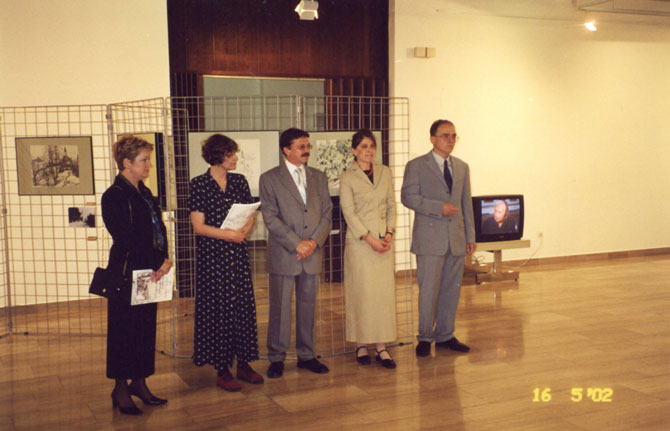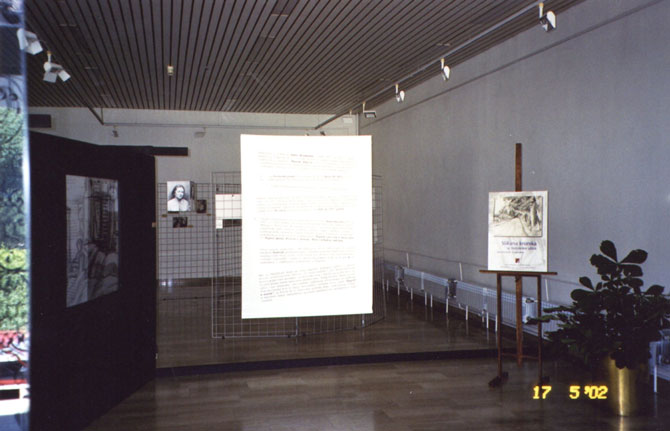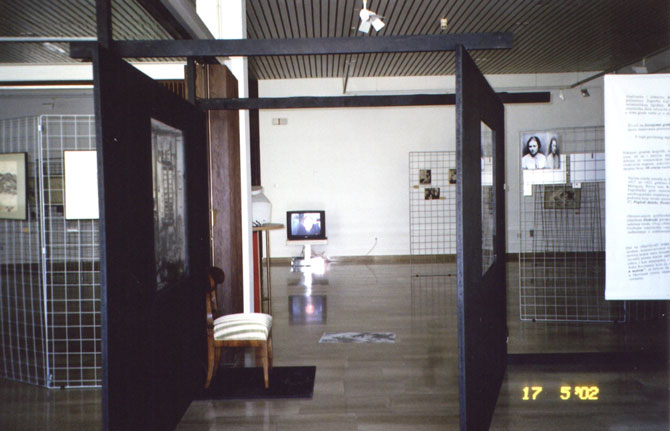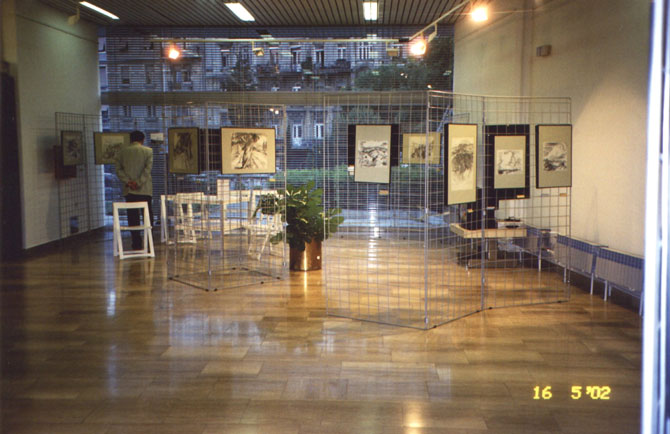Zagreb City Museum, guest appearance in Rijeka City Museum
Exhibition concept: Željka Kolveshi
Multimedia: Maja Šojat-Bikić, MSc
Exhibition design: Željko Kovačić
Poster design: Miljenko Gregl
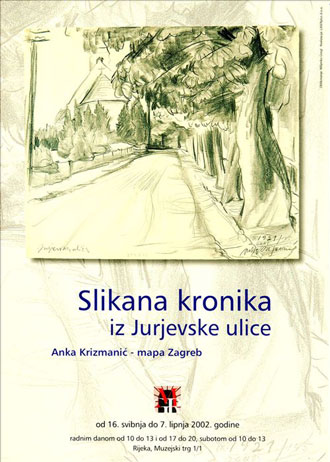 What is there to add about the life and work of Anka Krizmanić after the work of Dr Ivanka Reberski? We have behind us, the fruit of her research, a critical retrospective exhibition of Anka Krizmanić, put on in Zagreb's Art Pavilion in the autumn of 1986, as well as the book Anka Krizmanić, published in 1993, in which she defined the place of this painter in Croatian art. An expert on Croatian modern painting in the 1920s, through a comparative approach she has given a critical evaluation of the contribution of Anka Krizmanić to the realisms, the dominant stylistic trend, of the period.
What is there to add about the life and work of Anka Krizmanić after the work of Dr Ivanka Reberski? We have behind us, the fruit of her research, a critical retrospective exhibition of Anka Krizmanić, put on in Zagreb's Art Pavilion in the autumn of 1986, as well as the book Anka Krizmanić, published in 1993, in which she defined the place of this painter in Croatian art. An expert on Croatian modern painting in the 1920s, through a comparative approach she has given a critical evaluation of the contribution of Anka Krizmanić to the realisms, the dominant stylistic trend, of the period.
But the first exhibition to start the revaluation of Anka Krizmanić's reputation was put on by Dr Josip Kovačić in the Gallery of Trešnjevka House. In his accompanying text – “In Dresden ... she learned to love expressing herself with litho chalk, and stayed attached to this resiny material all her life... Through the whole of the oeuvre of Anka Krizmanić, experimentation with this chalk that cannot be erased is such a constant feature that an interesting exhibition of the expressive capacities of this medium could be made from her works alone” – Kovačić also foresaw the next exhibition at which certain drawing from the Zagreb portfolio were displayed (The Ulrich Gallery, 1985).
In the exhibition in the Zagreb City Museum, for the first time in a single place, all 50 drawings from the Zagreb portfolio were on display. Although they constitute only a small part, perhaps one hundredth, of the rich artistic oeuvre of Anka Krizmanić, spread out before us, they represented a challenge as to how to conceive the exhibition in such as way as to put at its focus one face of the identity of Zagreb during the 1920s, or, that is, a set of works of art the meaning of which, broadly considered, goes beyond pure art and belongs to the cultural history of the city.
It is in the nature of every city to be special, which it expresses through the spirit and the atmosphere it gives off. The portfolio of drawings of Anka Krizmanić exude a coherent distinctiveness of artistic expression. In her drawings, she has bequeathed to us the spirit and atmosphere of one part of Zagreb, the way she experienced it herself through her intimate connectedness with this nook of the great city. Thus her personal history became identified with the narrative of the city. And accordingly, to experience her drawings is to discover signs of the city, artistic messages of the time in which they came into being and, in particular, the relation between the author and the reality they were created in. By interpreting them and framing them in the life of the painter, we wished partially to show her interests through the motifs that occupied her as artist.
The picture of the city is much more complex, and other, than just a representation, as a respected subject of a traditional artistic medium. We took the drawings as a source on the base of which history can be reconstructed and read. The identity of one part of an urban space was offered to us in the reading of the iconography of a city behind which there are many data.
The original drawings are complemented by a reconstructed narrative of the place and the persons in the leafy area north of Jurjevska Street which started to be populated at the same time as Anka came to Zagreb, more precisely in the closest neighbourhood and the place of the artist herself in it, in a short period that coincides with the creation of her drawings. Although they are realistic, we have complemented the drawings with photography, and have attempted to show the part of Jurjevska Street in which this historical and artistic event occurred in plans.
Željka Kolveshi
Pictures from the exhibition

